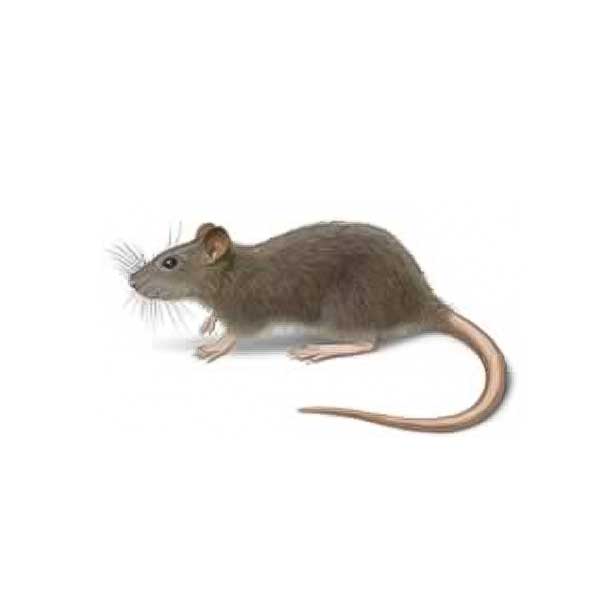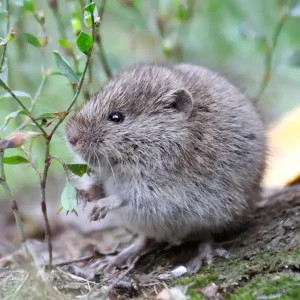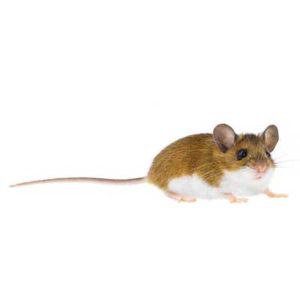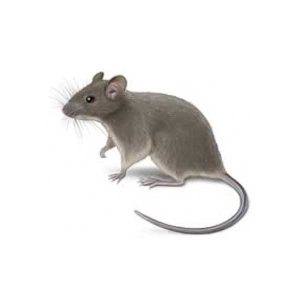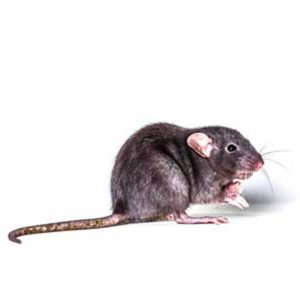Norway Rats in Georgia
Norway rats are stocky, heavy-bodied rats and are larger and more aggressive than their cousin, the roof rat or black rat. Found throughout the United States, Norway rats are commensal rodents, meaning they live near and depend on the human habitat for survival. Norway rats will eat almost anything but prefer cereal grains, meats, fish, nuts, and some fruits. Like most rodents, Norway rats are active an hour after sunset and just before dawn. The gnawing activity of Norway rats can cause considerable damage to homes, gardens, and structures. The main concern with these rats is that they carry serious diseases, including jaundice, rat bite fever, and salmonella.
What Do Norway Rats Look Like?
Norway rats are large rodents, typically measuring between 7 to 9.5 inches in body length, with an additional tail slightly shorter than their body. They have coarse brown fur, scattered black hairs, and a lighter gray or white underbelly. Their ears and tail are scaly and hairless. Norway rats are more robust than roof rats or black rats, with a heavier body and blunt snouts. Adult Norway rats can weigh 7 to 18 ounces, making them one of the largest rat species in homes.
Signs of Norway Rat Infestation
Detecting a Norway rat infestation early can help prevent extensive damage to your home. Here are some common signs of a rat infestation:
Droppings: Norway rats leave capsule-shaped droppings, about 3/4 inch long and dark in color. You’ll often find these droppings near food sources, along walls, or in attics and basements.
Gnaw marks: Rats have powerful teeth and constantly gnaw on materials like wood, plastic, and electrical wires. Fresh gnaw marks can indicate recent activity.
Nests: Norway rats build nests from soft materials like shredded paper, fabric, or insulation. These nests are typically found in hidden burrows, wall voids, or attics.
Tracks and rub marks: Rats leave greasy smudges along walls where they travel frequently, as well as footprints and tail marks in dusty areas.
Noises: If you hear scratching or squeaking noises at night, especially coming from walls or ceilings, it may indicate the presence of nocturnal rats.
Habitat, Diet, Life Cycle & Behaviors
Where Do Norway Rats Live?
In general, Norway rats are ground-burrowing animals that construct burrows that are 2 to 3 inches in diameter and up to 6.5 feet in length. Burrows are constructed outdoors, along with foundations and gardens. Norway rats are nocturnal and will enter homes at night in search of food, returning to their burrow. If nests are found inside homes, they are typically in basements and crawl spaces. If a population is large, Norway rats will nest in upper areas of a home or commercial property.
Diet
Norway rats are opportunistic foragers who will eat almost anything. They prefer high-protein foods like meat, pet food, grains, and human food waste. They are particularly attracted to garbage and unsecured food in homes. They are known to contaminate food with their droppings and urine, making them a significant health hazard.
Life Cycle
Norway rats reproduce quickly, making infestations challenging to control once established. Females reach sexual maturity at around 5 weeks old and can have up to 12 litters per year, with each litter containing 6 to 12 pups. A single female rat can give birth to over 50 offspring annually. This rapid reproductive rate allows Norway rat populations to grow swiftly if not controlled.
Behaviors
Norway rats are mostly nocturnal, meaning they are most active at night. They are skilled climbers and swimmers, allowing them to access a variety of hiding spots. As social animals, Norway rats tend to live in large colonies and communicate through high-pitched squeaks. They are also known for their gnawing behavior, which can cause significant damage to structures, furniture, and electrical wiring.
Are Norway Rats Dangerous?
Norway rats can damage foundations, slabs, garden crops, and plants as they burrow and gnaw to find food and shelter. When nesting in walls and attics, Norway rats may cause extensive damage inside homes. Accounts of rodents starting fires through gnawing electrical wires have been widely reported. Chewed, exposed wires inside walls can spark, causing interior walls to catch fire. When foraging for food, these rats consume and contaminate food meant for humans, pets, and livestock. Salmonella, leptospirosis, and rat bite fever are among the dozens of diseases spread by Norway rats.
Contact our professional rodent pest control service if you’re experiencing a challenging Norway rats infestation on your property.
How to Get Rid of Norway Rats?
Combining treatment methods and ongoing prevention efforts is essential to eliminate Norway rats effectively. Utilizing traps, such as snap and live traps, is common. These should be placed near entry points or along walls where rat activity is observed. While poison baits can be effective, they must be handled with care, particularly in homes with pets or children, so seeking assistance from our rodent pest control services can ensure safe and efficient application. Additionally, sealing off potential entry points is crucial. This can be done by addressing holes around pipes, foundation cracks, and wall gaps with materials like caulk, steel wool, or hardware cloth. Maintaining cleanliness is also vital—by reducing access to food sources through regular cleaning, storing food in airtight containers, and securing garbage, you can make your home significantly less appealing to rats.
Norway Rat Prevention Tips
Preventing Norway rats from entering your home is key to avoiding infestations. Seal any cracks, holes, or gaps with rodent-proof materials to block their entry. Store food, including pet food, in airtight containers and promptly clean up spills to reduce attraction. Remove clutter, such as debris and wood piles, that can serve as nesting spots, and ensure tightly sealed garbage cans. Lastly, trim shrubs and trees away from your home’s foundation to eliminate potential shelters. These steps can help reduce the risk of a Norway rat infestation.
Need Help with Norway Rat Control in Your Georgia Home?
If you’re struggling with a Norway rat infestation or suspect you have a rat problem in your Georgia home, it’s essential to act quickly. We provide professional rodent control services tailored to your property’s specific needs. Our experts can help with everything from identifying entry points and nests to safely removing rats and preventing future infestations.
We also offer helpful resources like rodent identification guides, rodent prevention guides, and rodent treatment guides to give you the information you need to address any infestation challenges. Contact us today to schedule an inspection and take the first step in protecting your home from these destructive pests.
Need help with pest control?
Ready for your FREE quote?
Fill out the form below and we’ll be in touch!
*During normal business hours. After hours inquiries will be returned the next business day.
FAQS
Do Norway Rats Carry Hantavirus?
Norway rats are not typically associated with hantavirus. In the U.S., deer mice and rodent species are the primary carriers of Hantavirus Pulmonary Syndrome (HPS). However, Norway rats can spread other dangerous diseases, such as leptospirosis, salmonellosis, and rat-bite fever.
How Big Can A Norway Rat Get?
Norway rats can grow up to 9.5 inches in body length, not including their tail, which can add an additional 6 to 8 inches. Adult Norway rats can weigh between 7 to 18 ounces, making them one of the largest rodent species that infest homes.
Do Roof Rats And Norway Rats Live Together?
No, roof rats and Norway rats typically do not live together. Roof rats prefer higher places like attics and trees, while Norway rats tend to burrow and live closer to the ground in basements or crawl spaces. They often compete for resources, so they avoid cohabitation.
Can Norway Rats Climb?
Yes, Norway rats are skilled climbers. While they prefer to burrow, they can also climb walls, pipes, and rough surfaces to access food and shelter, making them highly adaptable outdoors and indoors.

